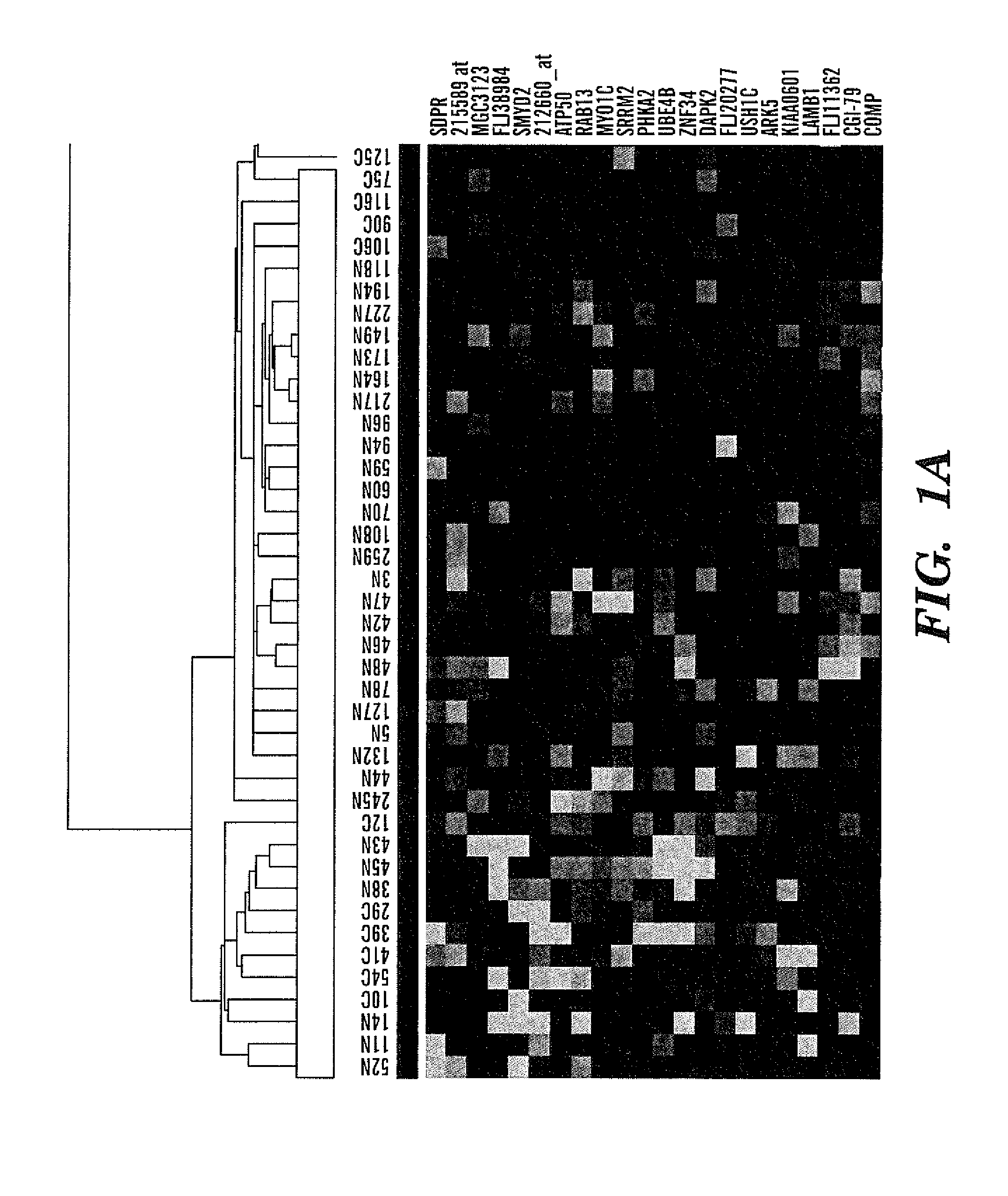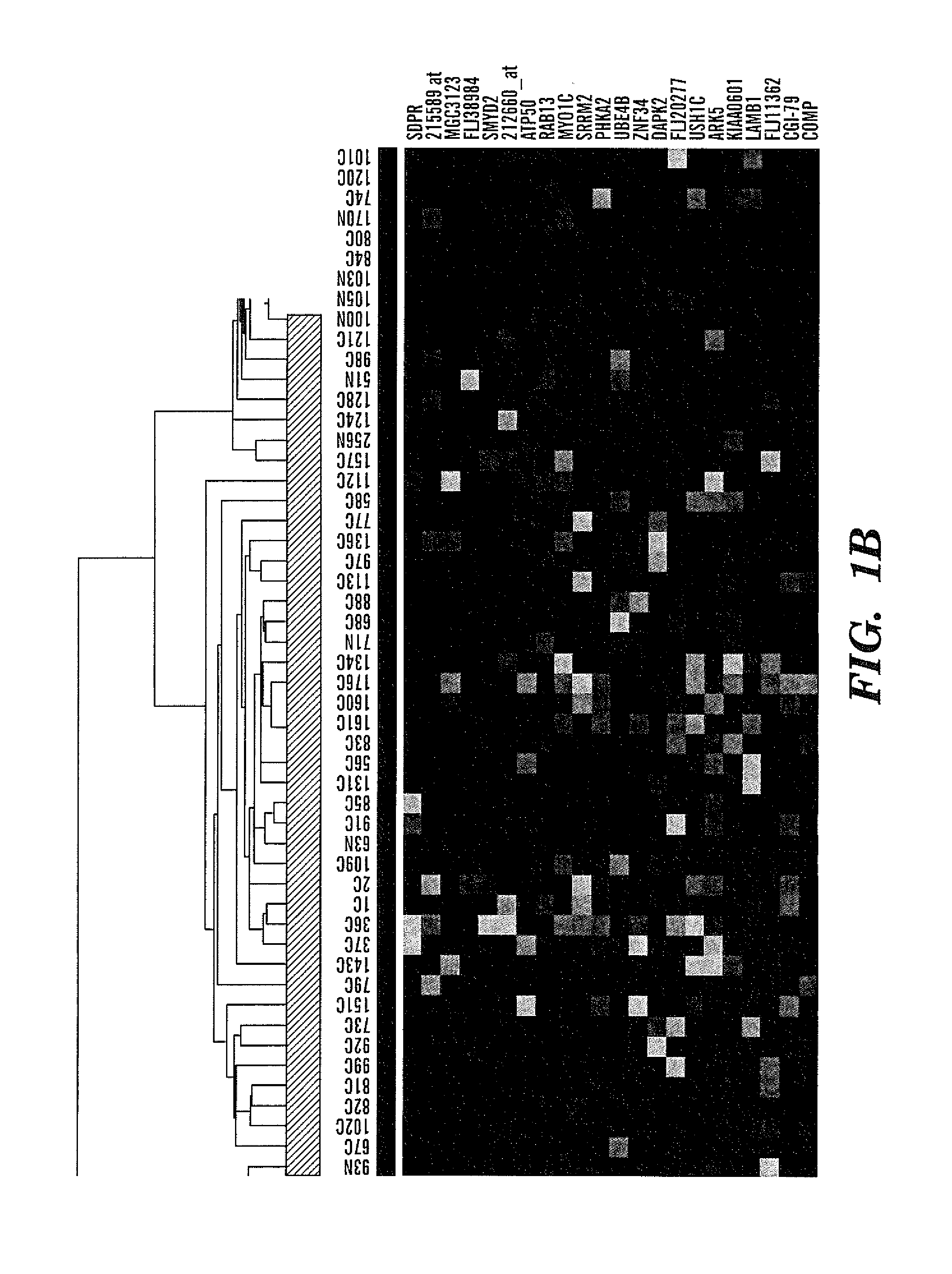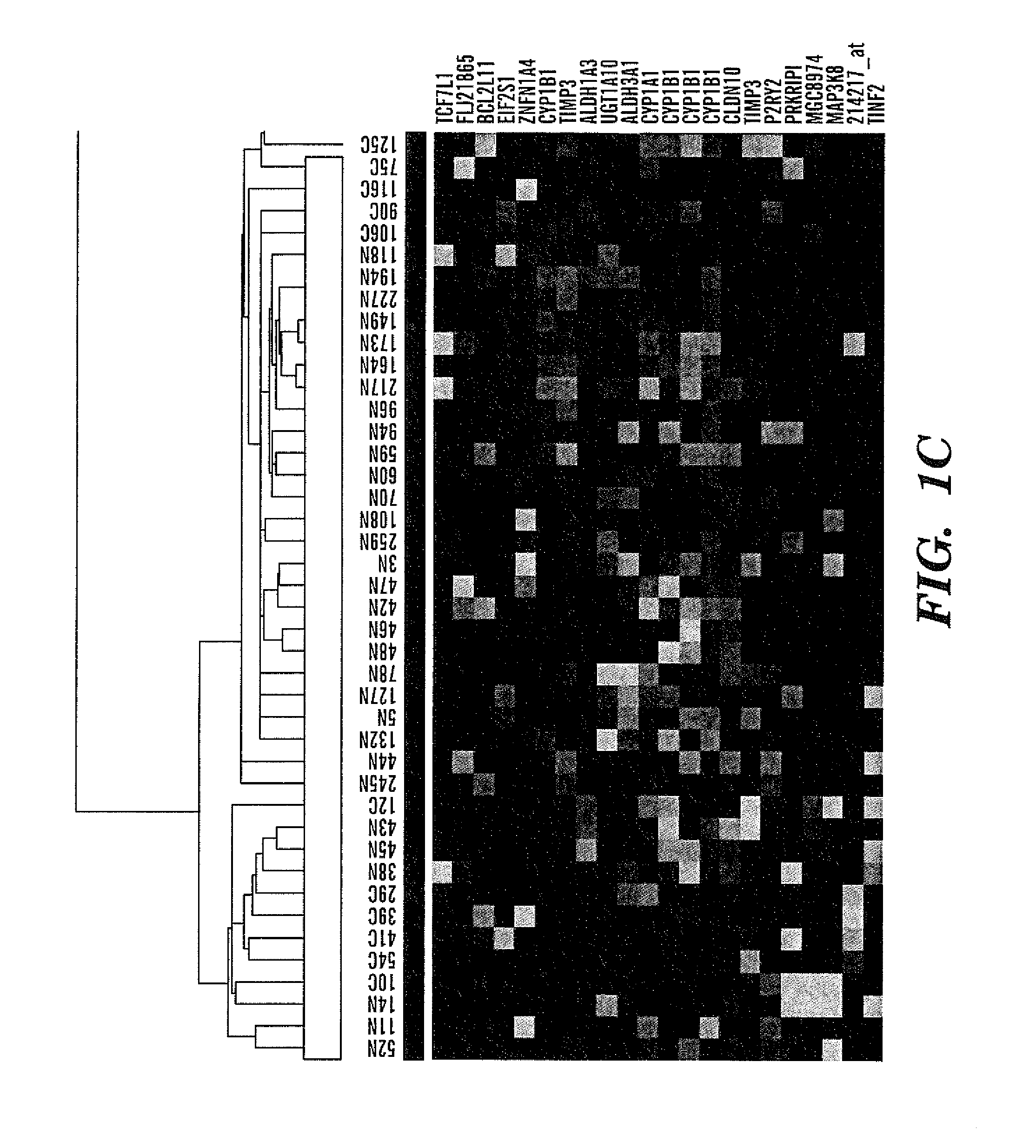Diagnostic and prognostic methods for lung disorders using gene expression profiles from nose epithelial cells
a technology of epithelial cells and gene expression profiles, which is applied in the field of diagnosis and prognostic methods of lung disorders using gene expression profiles from nose epithelial cells, can solve the problems of serious lung disease risk to individuals, serious lung disease risk, and insignificant survival rate, and achieve the effect of less invasiv
- Summary
- Abstract
- Description
- Claims
- Application Information
AI Technical Summary
Benefits of technology
Problems solved by technology
Method used
Image
Examples
example 1
[0170]In this study, we obtained nucleic acid samples (RNA / DNA) from nose epithelial cells. We also obtained nucleic acids from blood to provide one control. We used our findings in the PCT / US2006 / 014132 to compare the gene expression profile in the bronchial epithelial cells as disclosed in the PCT / US2006 / 014132 to the gene expression pattern discovered in this example from the nasal epithelial cells.
[0171]We have explored the concept that inhaled toxic substances create a epithelial cell “field of injury” that extends throughout the respiratory tract. We have developed the hypothesis that this “field of injury”, measured most recently in our laboratory with high density gene expression arrays, provides information about the degree of airway exposure to a toxin and the way in which an individual has responded to that toxin. Our studies have been focused on cigarette smoke, the major cause of lung cancer and of COPD, although it is likely that most inhaled toxins result in a change ...
example 2
[0183]A Comparison of the Genomic Response to Smoking in Buccal, Nasal and Airway Epithelium
[0184]Approximately 1.3 billion people smoke cigarettes worldwide which accounts for almost 5 million preventable deaths per year (1). Smoking is a significant risk factor for lung cancer, the leading cause of cancer-related death in the United States, and chronic obstructive pulmonary disease (COPD), the fourth leading cause of death overall. Approximately 90% of lung cancer can be attributed to cigarette smoking, yet only 10-15% of smokers actually develop this disease (2). Despite the well-established causal role of cigarette smoke in lung cancer and COPD, the molecular epidemiology explaining why only a minority of smokers develop them is still poorly understood.
[0185]Cigarette smoking has been found to induce a number of changes in both the upper and lower respiratory tract epithelia including cellular atypia (3, 4), aberrant gene expression, loss of heterozygosity (3, 5) and promoter hy...
PUM
| Property | Measurement | Unit |
|---|---|---|
| Volume | aaaaa | aaaaa |
| Volume | aaaaa | aaaaa |
| Volume | aaaaa | aaaaa |
Abstract
Description
Claims
Application Information
 Login to View More
Login to View More - R&D
- Intellectual Property
- Life Sciences
- Materials
- Tech Scout
- Unparalleled Data Quality
- Higher Quality Content
- 60% Fewer Hallucinations
Browse by: Latest US Patents, China's latest patents, Technical Efficacy Thesaurus, Application Domain, Technology Topic, Popular Technical Reports.
© 2025 PatSnap. All rights reserved.Legal|Privacy policy|Modern Slavery Act Transparency Statement|Sitemap|About US| Contact US: help@patsnap.com



